fall inside a hole
R-12 Figure 8 Point Rail (1974)
| <-- R-11 Turnout Rail | R-13 Single/Double Point Rail --> |
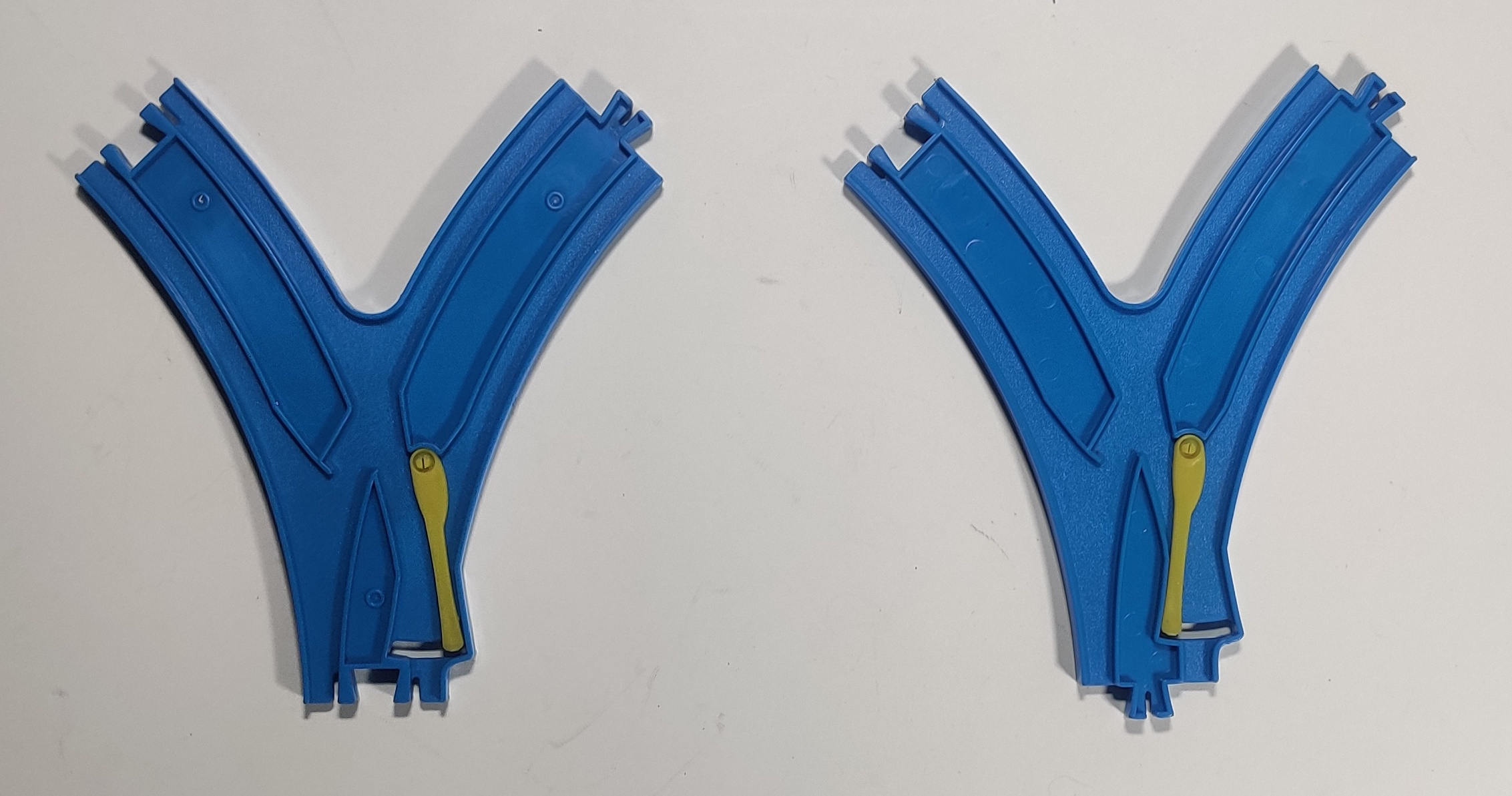
The R-12 Figure 8 Point Rail (8の字ポイントレール) was introduced in 1974, seemingly with roughtop tread from the start, implying production began after the "regular" turnout rail which was briefly produced in an all-smooth variety earlier in 1974 before being changed to roughtop alongside the rest of the rails in the range during 1974.
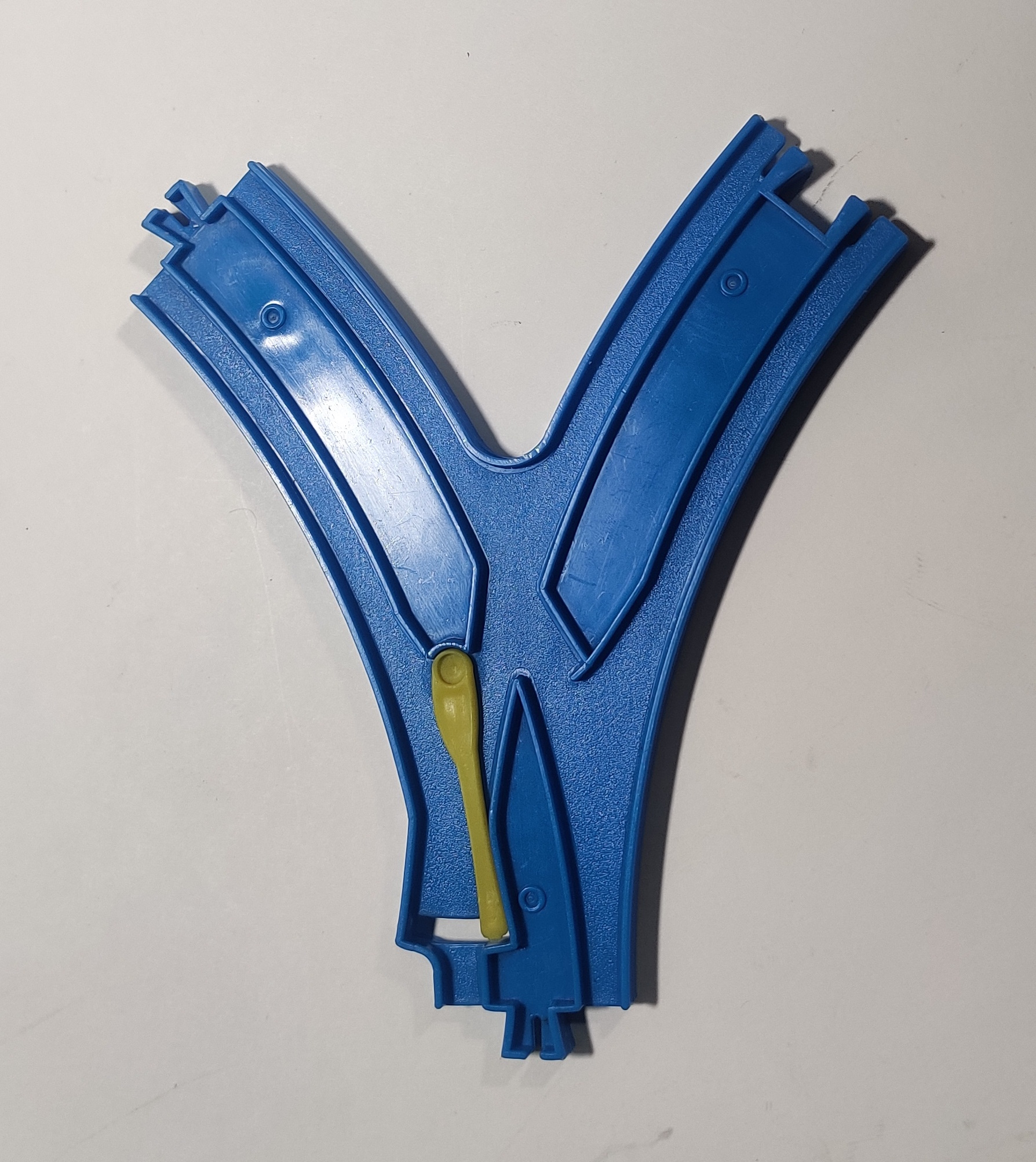
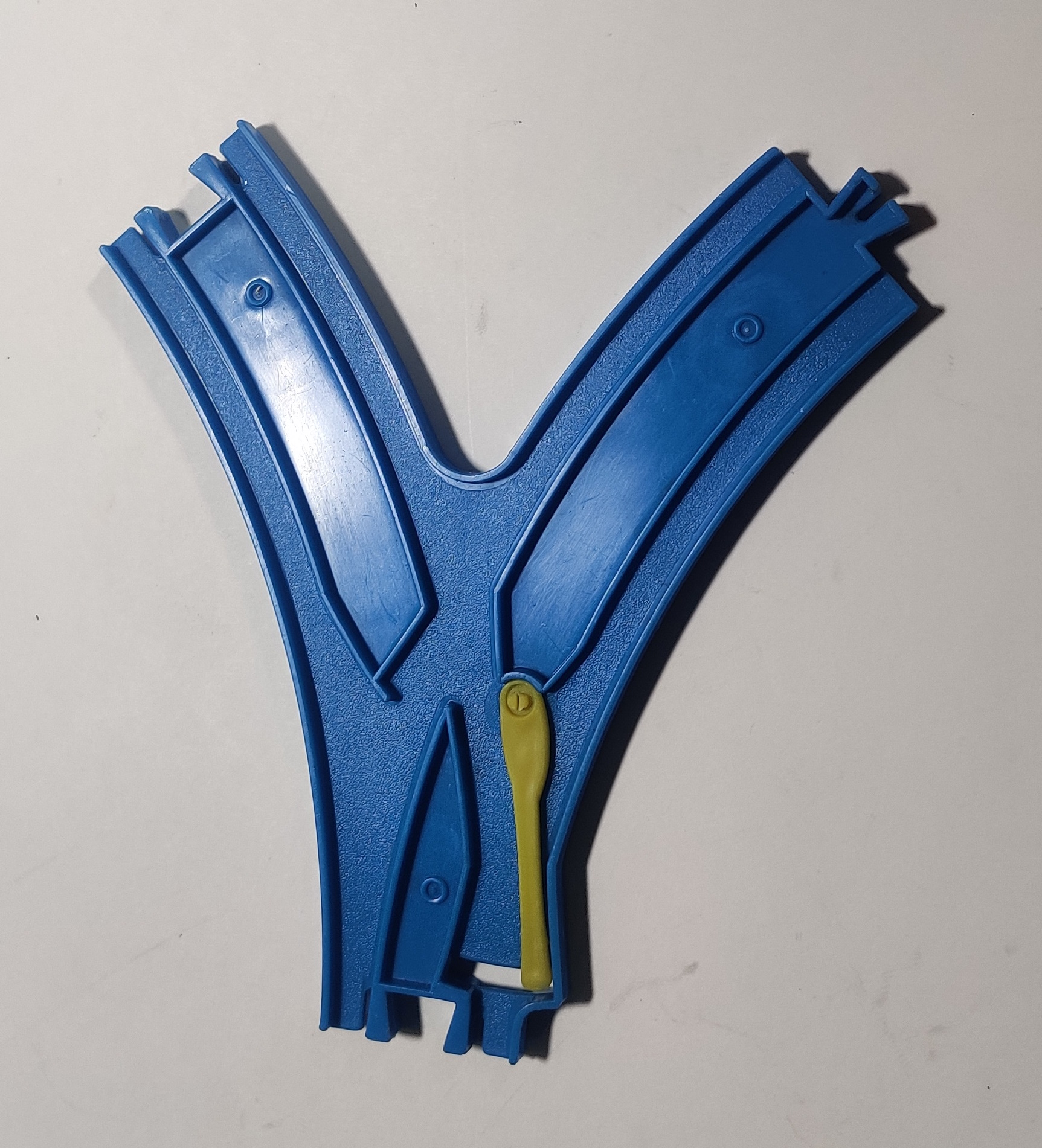
The standard individual release is one of each "L" (convex entrance) and "R" (concave entry) points, and the bagged release was given the designation 33 under the 1970s numbering scheme and R-12 under the 1988 numbering scheme. Due to the configuration of the connectors, one branch has the configuration of a normal curve rail while the other either has two concave or two convex joints.
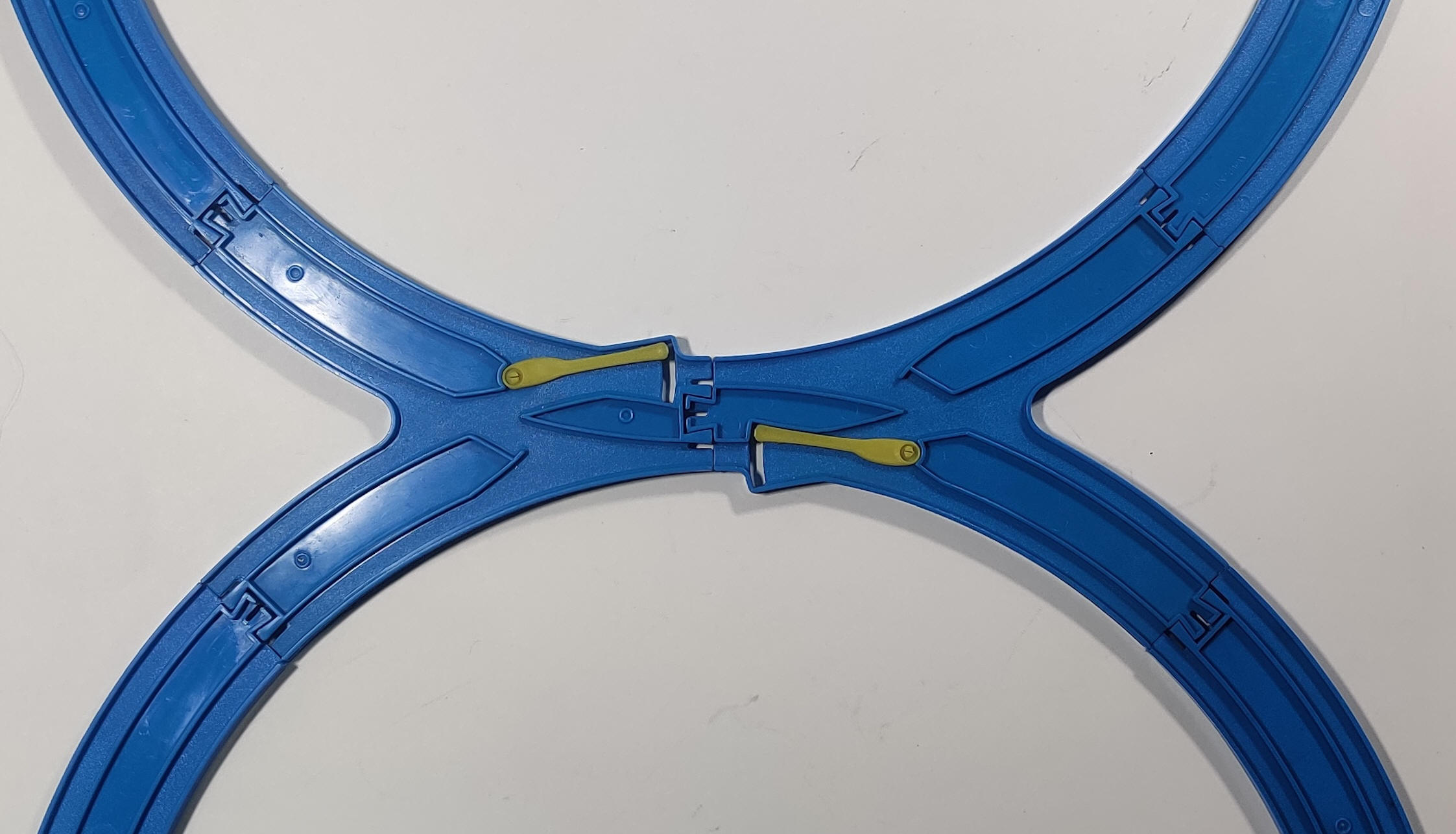

These turnouts are essentially two curved track pieces pointing in opposite directions, and thus fit well into the rail standard. As the name implies, these switches can be used to make a figure eight (with the added ability to leave the "crossing" in two different directions, as opposed to a true crossing with no points involved).
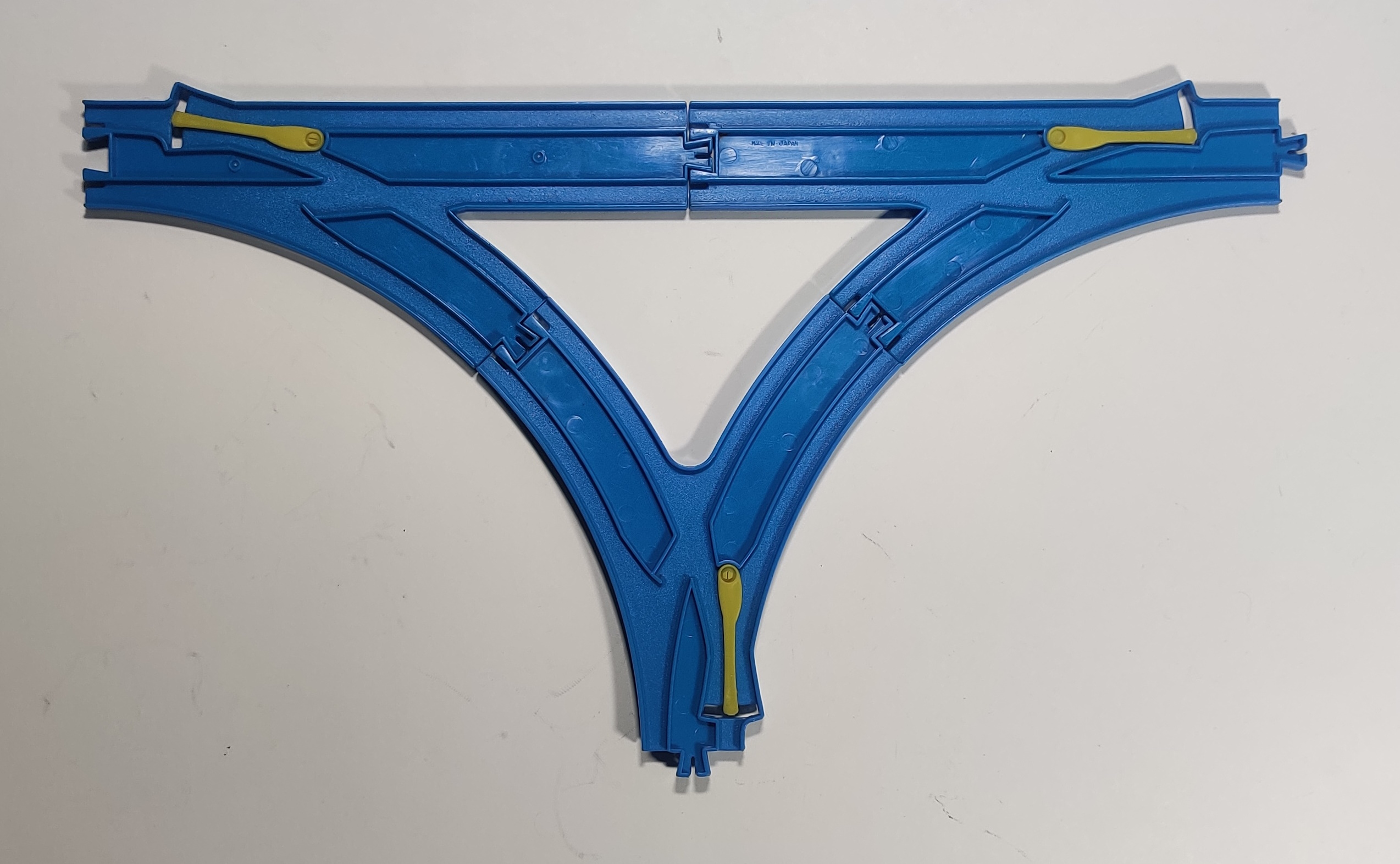
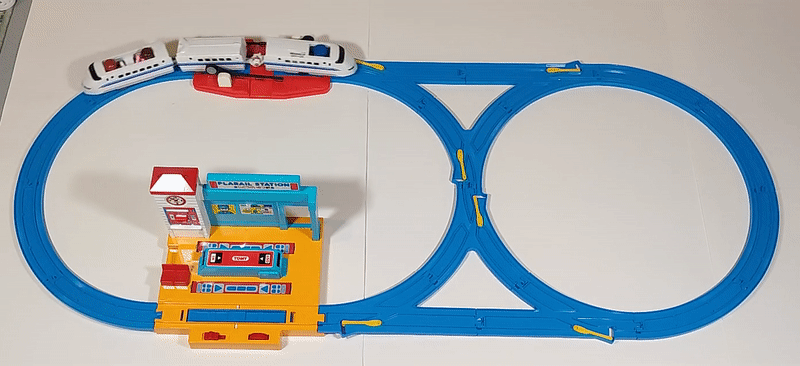
With the addition of two R-11 Turnout Rails, a wye can be formed, and combined with a second wye using the opposite type of three-way switch allows for a reversing figure-eight type layout.
Roughtop rails (1974)

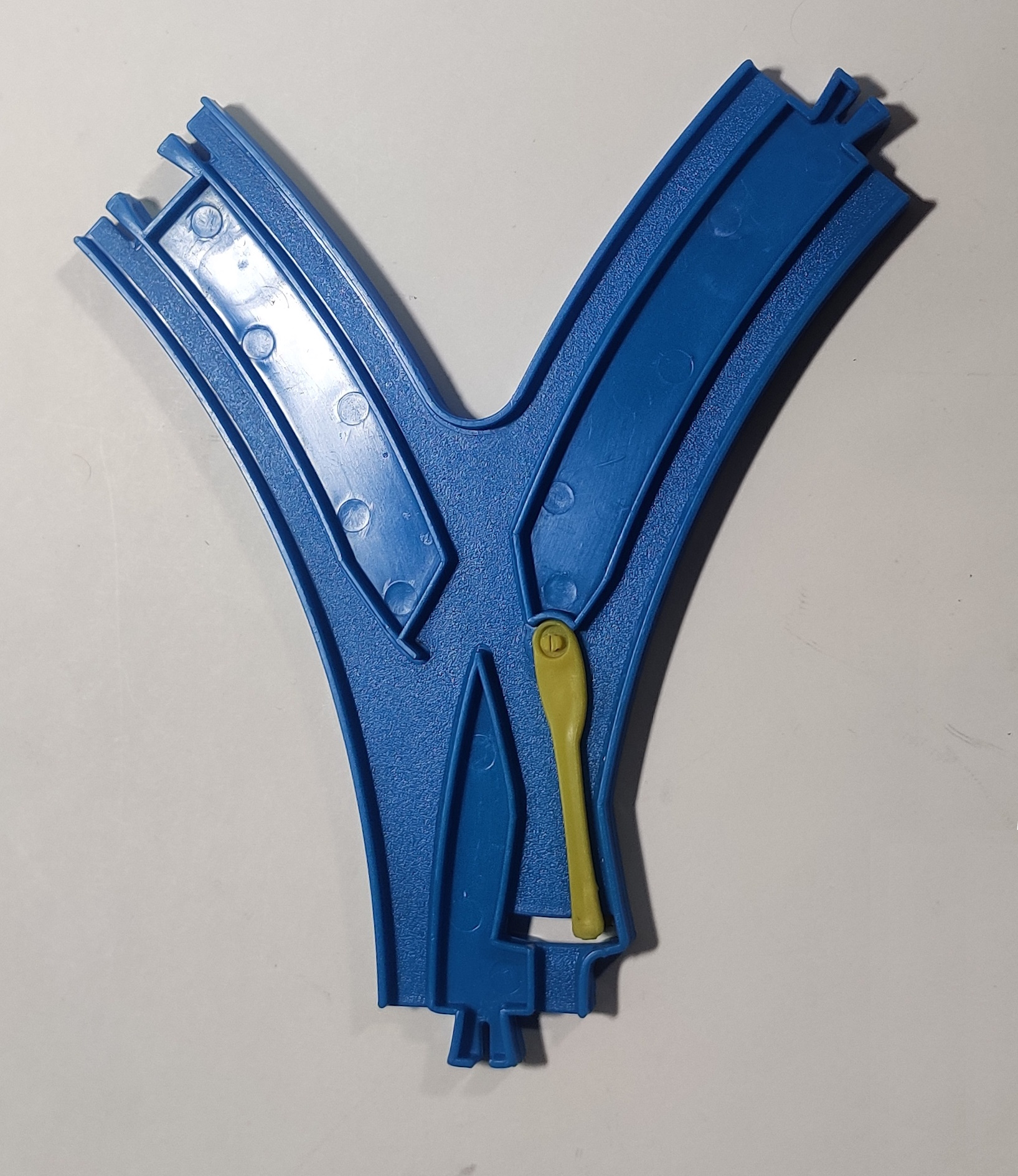

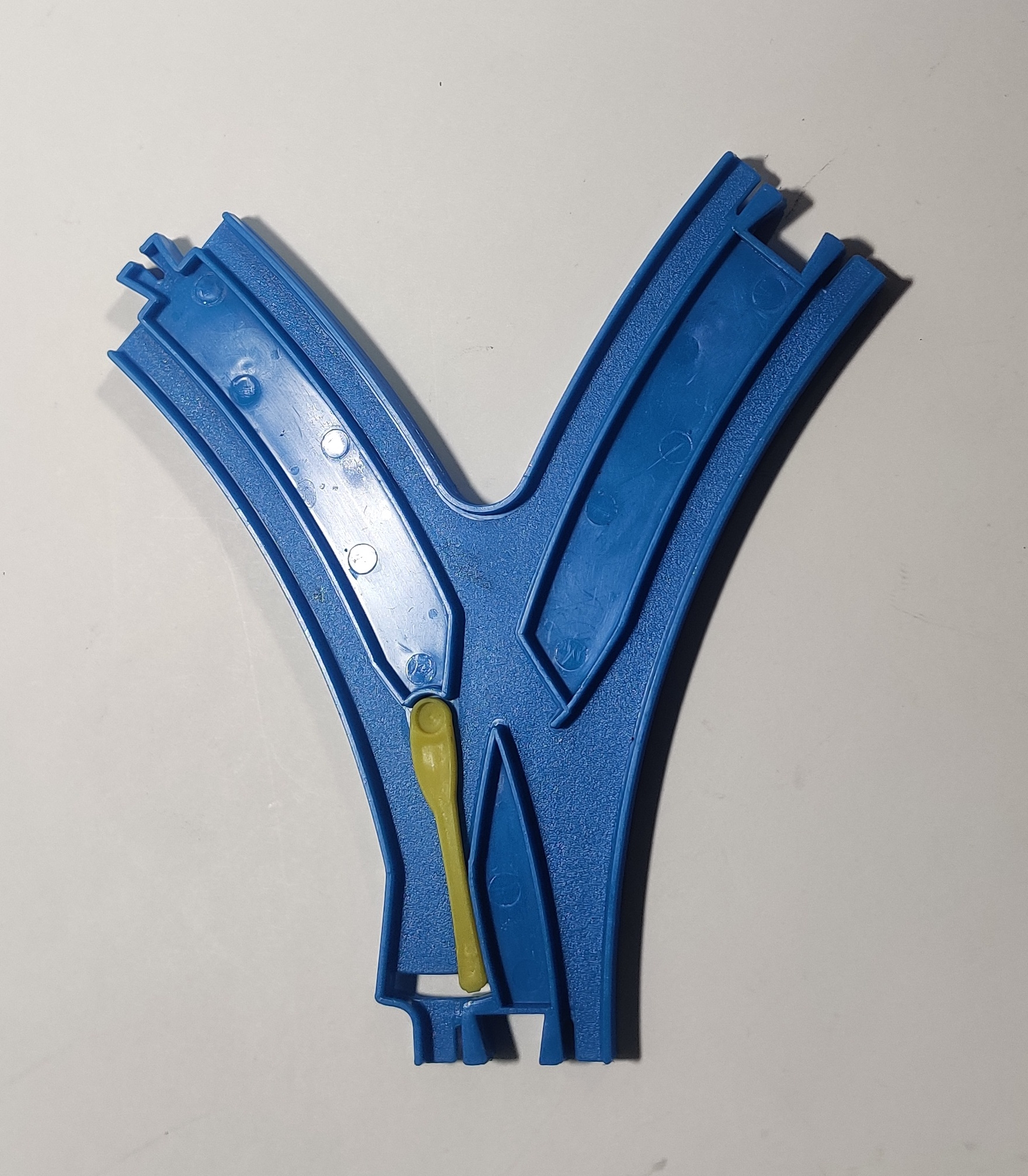
Early roughtop turnout rails do not have any Tomy or Japan markings. The yellow directional-changing lever is a more translucent plastic. The rails have a cutout and allow for a single-piece, all-plastic directional rail to be implemented, as opposed to the two separate levers used on older Single/Double Point Rails and the updated Tot Railroad parallel switch.
In the later 1970s the text "Japan" was added to the underside of one of the branches.
Treaded rails (1990s)
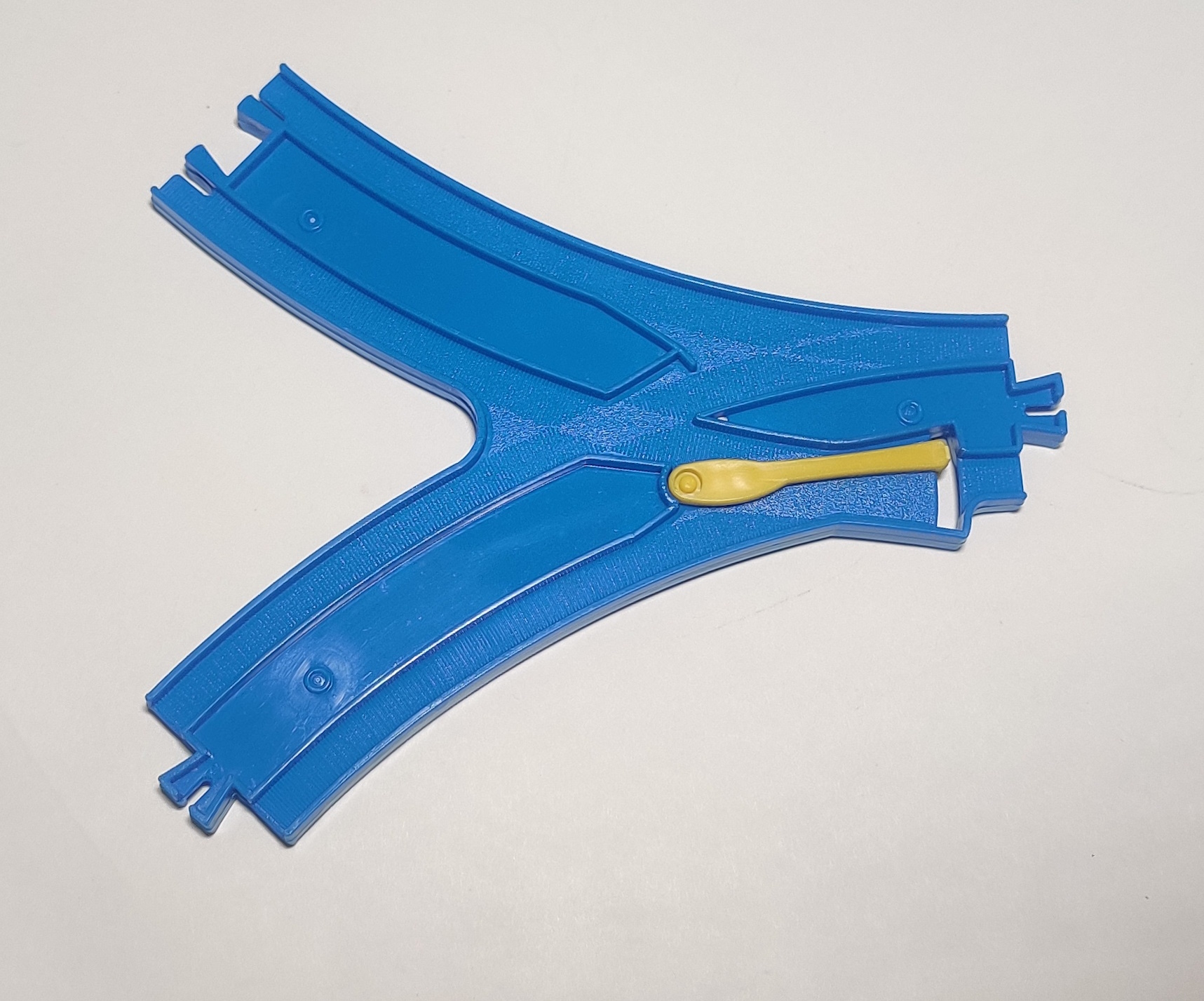
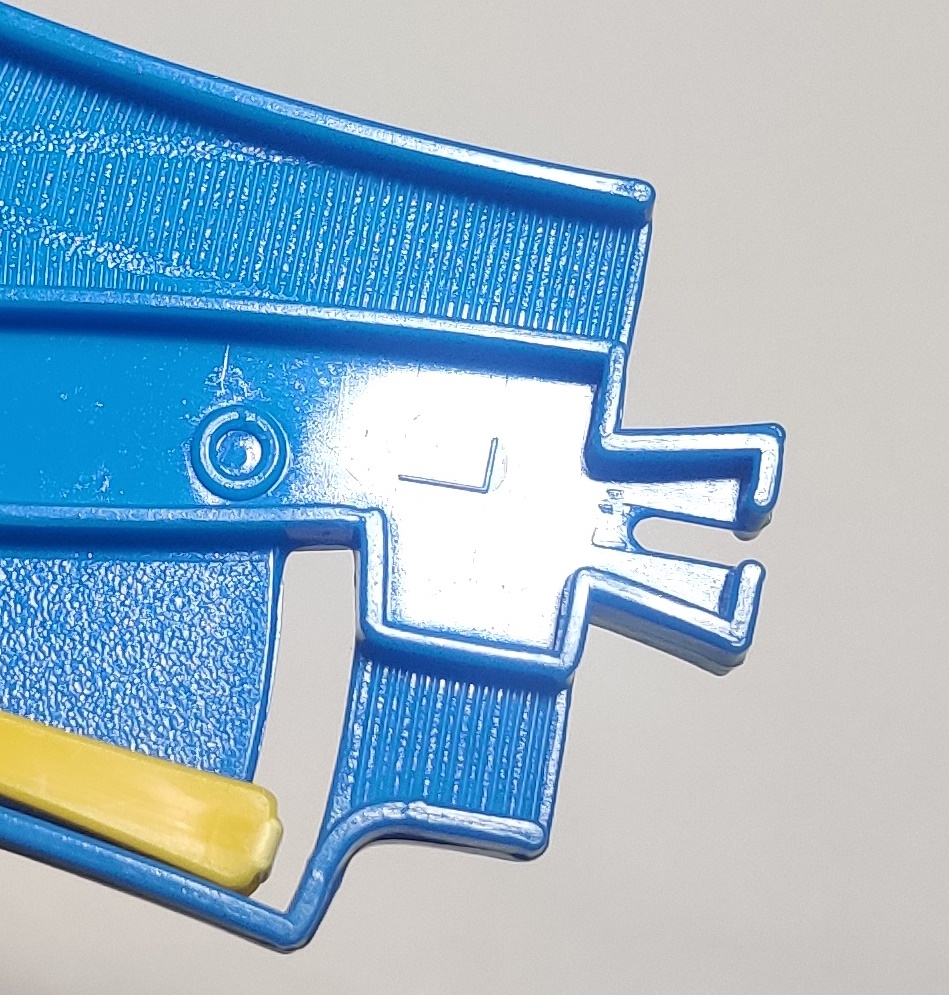
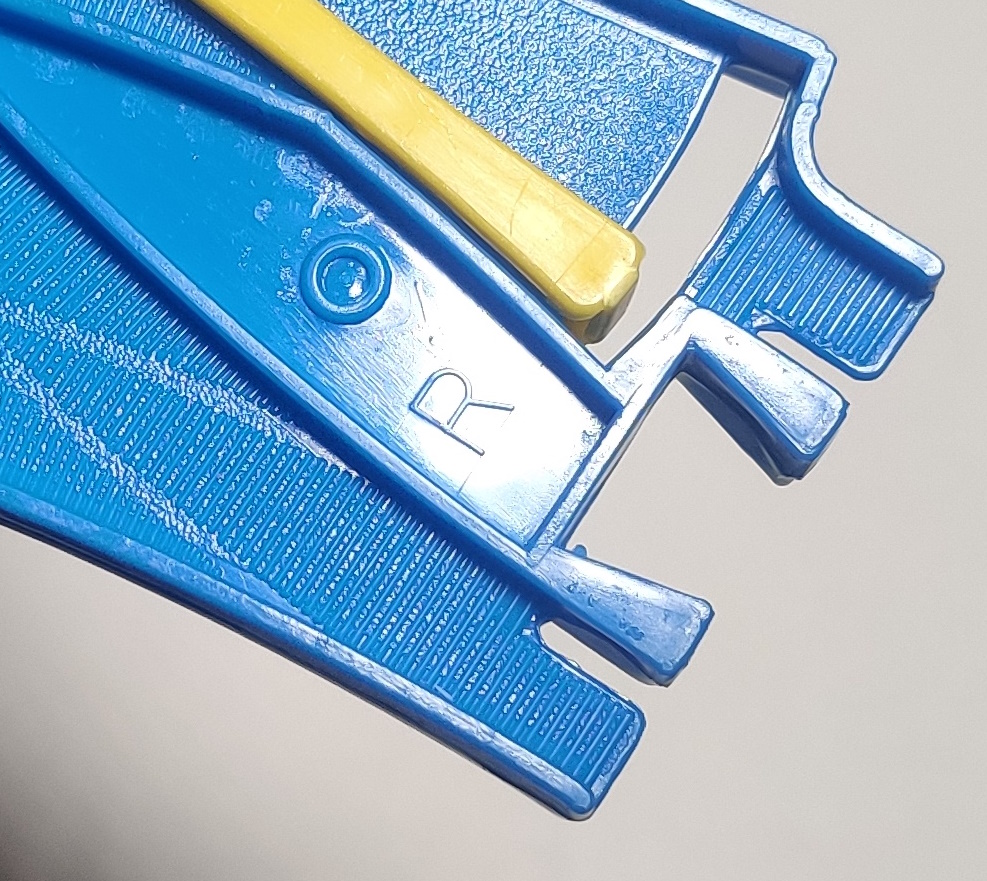
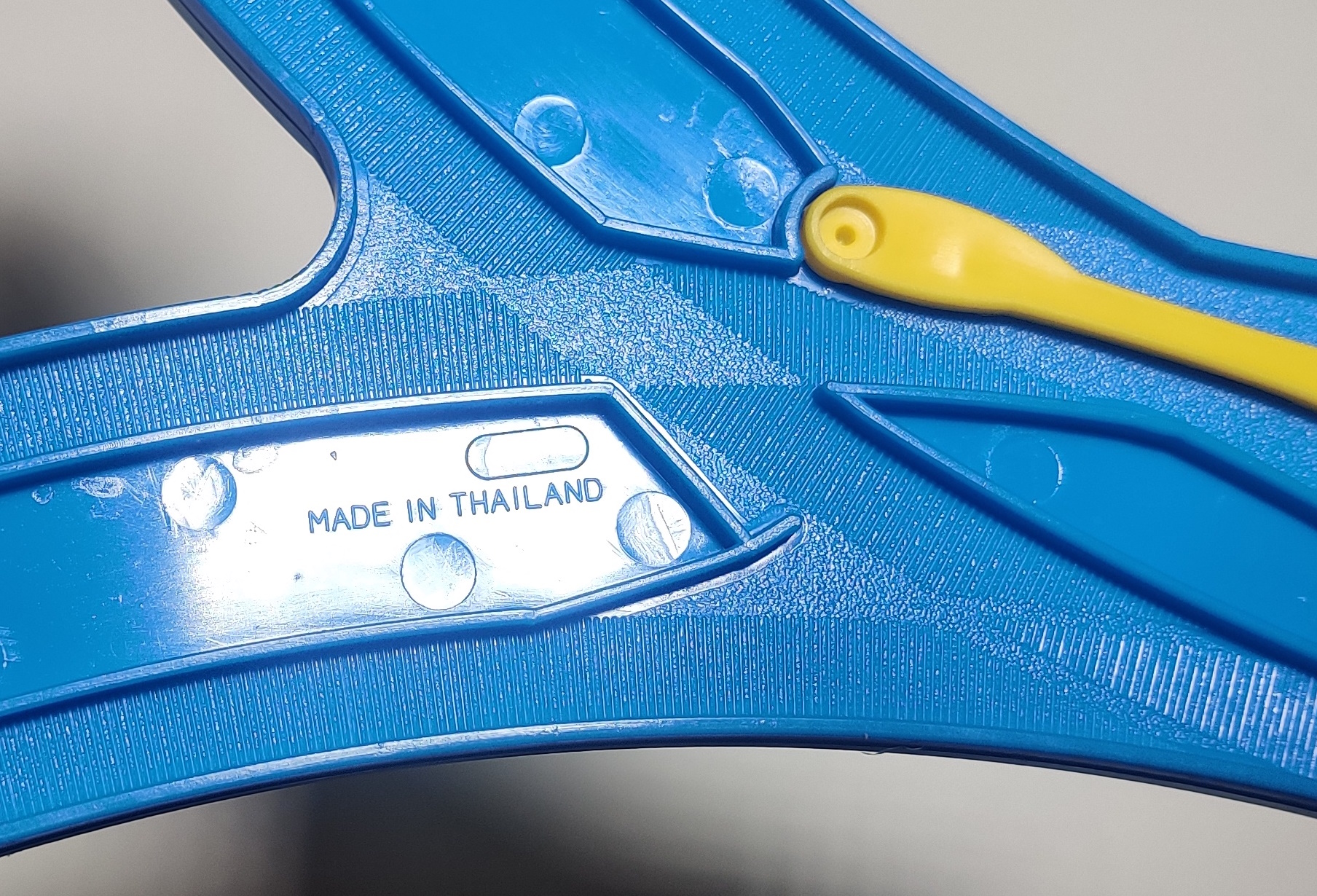
In 1989 Tomy began producing Plarail in their Thailand factory, with Thailand-made turnouts appearing in the early 1990s, seemingly using old updated Japan roughtop toolings. These rails are treaded over roughtop and thus have roughtop patches over some parts of the switch that do not have tread in the tooling, which is actually an advantage over some pure tread points with mostly smooth patches where tread can not be applied. These rails are also marked with L or R on the top near the entrance connector and have Made in Thailand text near where the tooling previously said Japan in the bottom of the tooling.
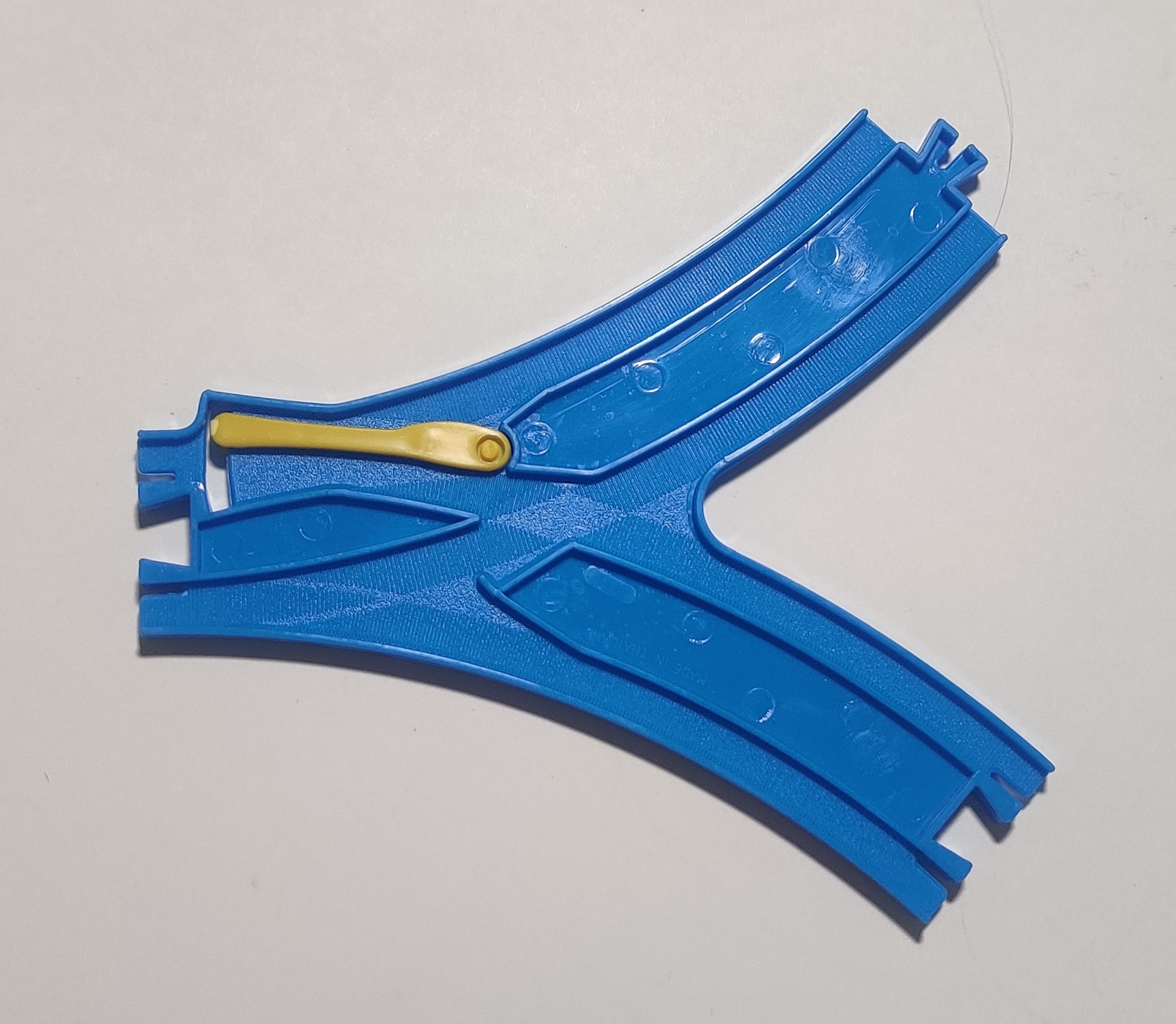
These tread-over-roughtop rails continued to be produced into the early 2000s.
7490 Y Shaped Points Rail
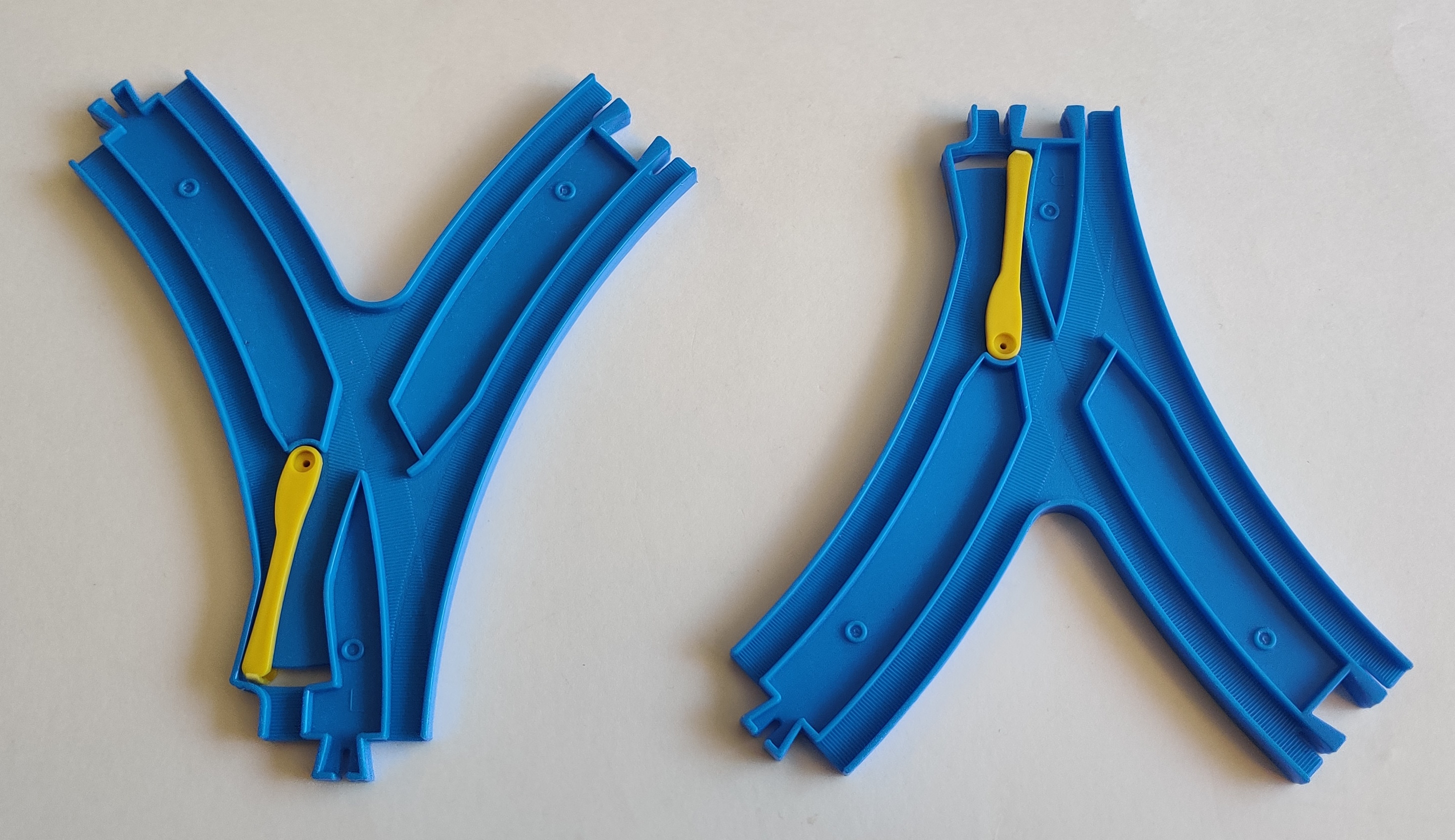
In 1998 as part of the Tomica World series pairs of figure-eight turnouts were sold individually and in sets for the American and European markets.
| <-- R-11 Turnout Rail | R-13 Single/Double Point Rail --> |